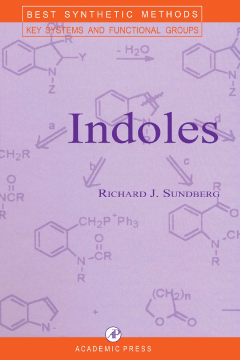
Additional Information
Book Details
Abstract
Indoles continue to be of great interest to the pharmaceutical industry and at the current time several thousand specific new derivatives are reported annually. Research has been driven by the wide range of indole derivatives which occur in nature and through the biological activity of many indole derivatives, of both natural and synthetic origin.This book provides a systematic guide to the most useful and important reactions in the field for both synthesis and synthetic modification of the indole ring. While including the most recently developed and promising methods, it also updates informationavailable on classical methods to give the reader an up-to-date and comprehensive view of the subject. The methods are illustrated by procedures drawn from the literature and by tables including examples chosen to indicate both the scope of applicabilityand variations in methodology. The organization of the book is based on the retrosynthetic concept of identifying the bond(s) formed in the reaction, which in turn identifies potential starting materials.
- Includes systematic summaries of the most important methods for the construction of indoles from aromatic precursors
- Discusses methods for preparing indoles by annelation of pyrroles
- Covers methods for adding or modifying substituent groups, including methods for introducing the tryptamine and tryptophan side-chainsExamines reduction/oxidation reactions that are specific for indoles
- Considers use of cycloaddition reactions for synthetic elaboration of indoles
"This volume is a valuable addition to the Best synthetic methods series, and the author and publishers are to be congratulated on producing a book that all concerned with nitrogen heterocyclic chemistry will find of considerable value." --CHEMISTRY AND INDUSTRY
"In his preface, Professor Sundberg states that he attempted to illustrate the most widely used synthetic methods in indole chemistry on the basis of the retrosynthetic concept of identifying the bonds being formed. Not only has he succeeded, but he hasdone an outstanding job...the book is an absolute must for those interested in indole chemistry...(it) describes most major classical methods and emphasizes all the newer methods available. Professor Sundberg is to be congratulated." --JOURNAL OF MEDICINAL CHEMISTRY
